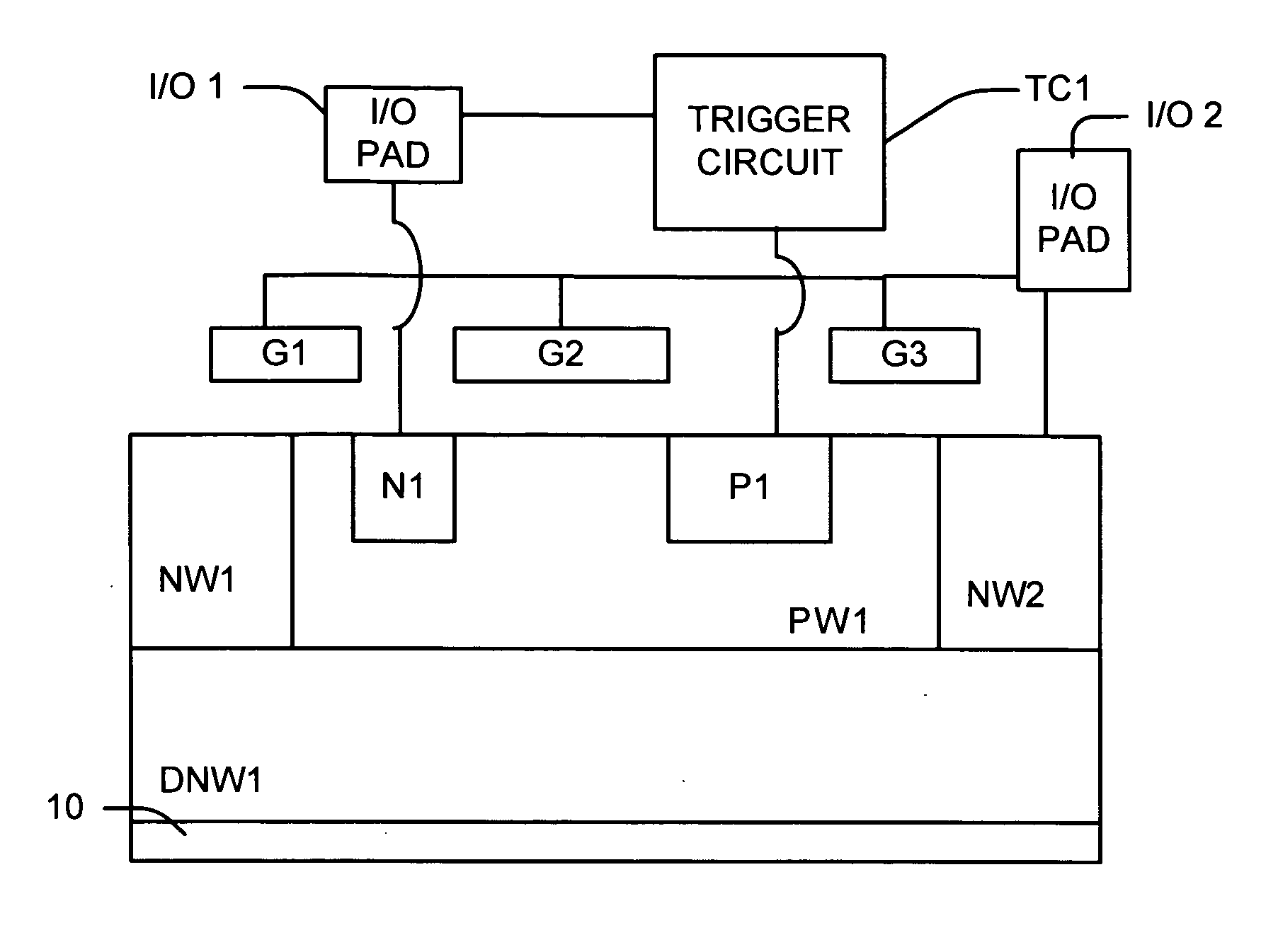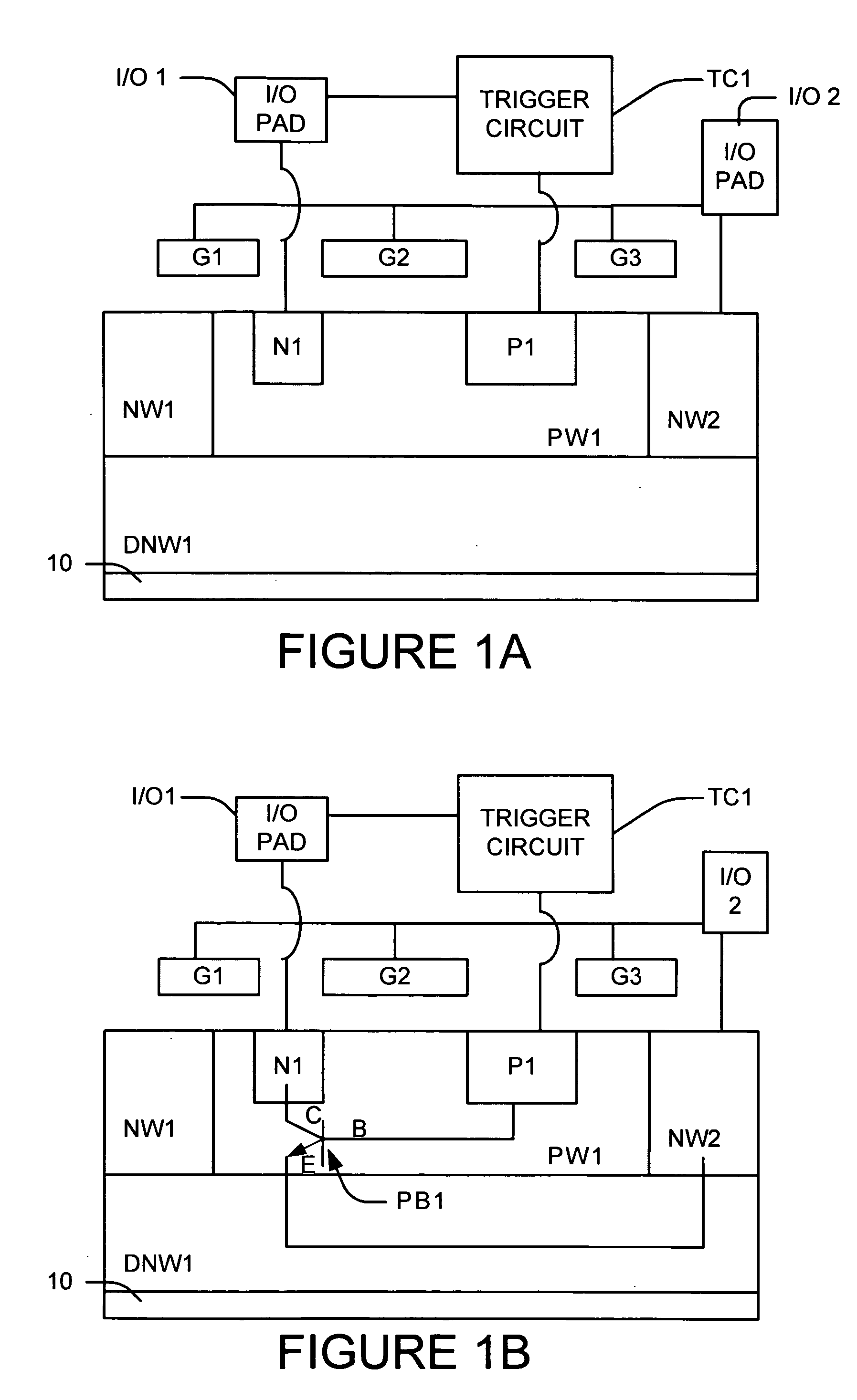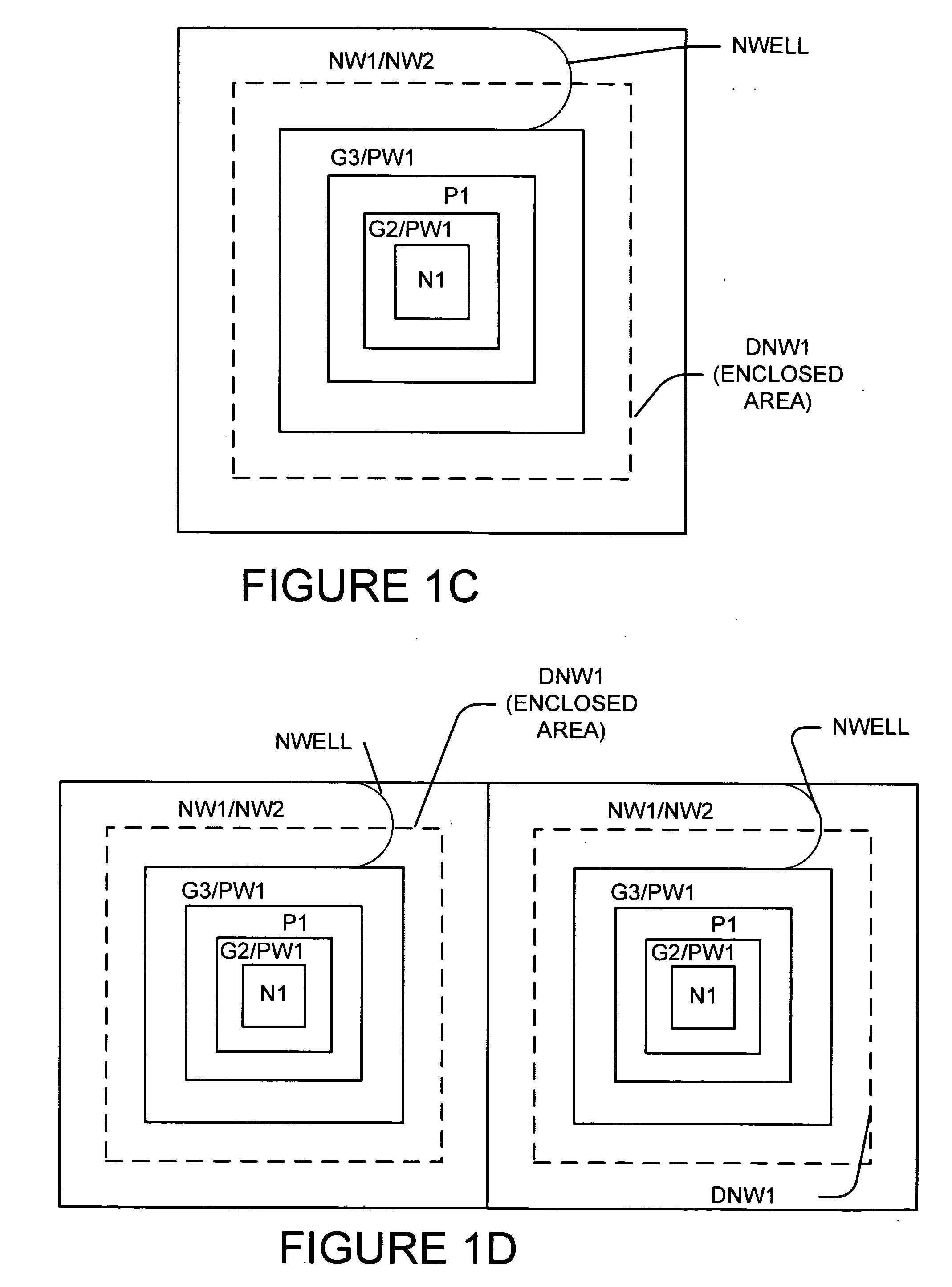Triggererd back-to-back diodes for ESD protection in triple-well CMOS process
- Summary
- Abstract
- Description
- Claims
- Application Information
AI Technical Summary
Benefits of technology
Problems solved by technology
Method used
Image
Examples
first example embodiment
of ESD Protection Device
[0042] Referring to FIGS. 1A and 1B, a first example embodiment of ESD protection device is shown. FIG. 1B shows a representation of the a parasitic bipolar transistor (PB1). The example shows a first N doped region (N1), a p-well (PW1) and deep n-well (DNW1). But, the opposite conductivity type structure can be formed.
[0043] A substrate structure 10 is provided. The semiconductor structure can be comprised of silicon (Si). The top surface of the substrate structure 10 is preferably a p minus doped silicon layer, such as the top portion of a p type silicon wafer.
[0044] A n-doped region (N1) and a p-doped region (P1) are in a p-well (PW1) in a semiconductor structure 10. The n-doped region (N1) and a p-doped region (P1) are preferably spaced apart.
[0045] The n-doped region (N1) and a p-doped region (P1) are preferably spaced by the p-well (PW1).
[0046] The n-doped region (N1) and a p-doped region (P1) could be spaced by isolation region (e.g., STI) between ...
PUM
 Login to View More
Login to View More Abstract
Description
Claims
Application Information
 Login to View More
Login to View More - R&D
- Intellectual Property
- Life Sciences
- Materials
- Tech Scout
- Unparalleled Data Quality
- Higher Quality Content
- 60% Fewer Hallucinations
Browse by: Latest US Patents, China's latest patents, Technical Efficacy Thesaurus, Application Domain, Technology Topic, Popular Technical Reports.
© 2025 PatSnap. All rights reserved.Legal|Privacy policy|Modern Slavery Act Transparency Statement|Sitemap|About US| Contact US: help@patsnap.com



